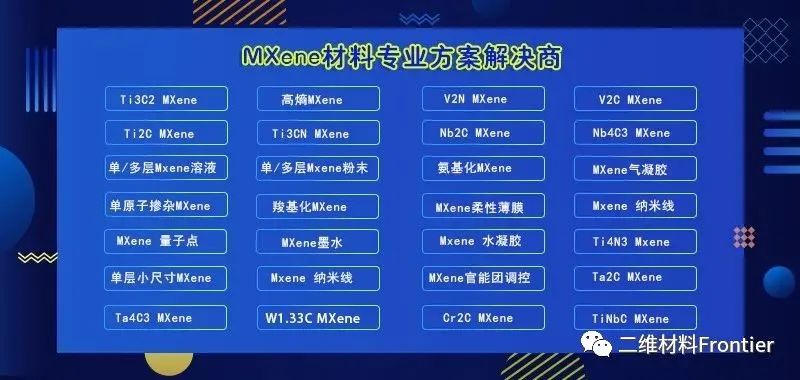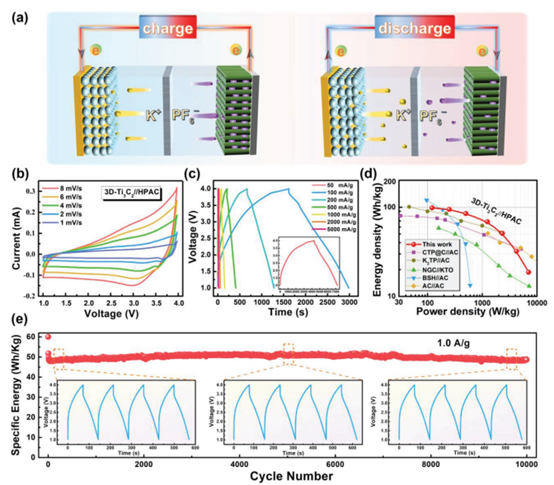
hotline:
17715390137
Tel/Wechat:
18101240246 (Technology)
0512-68565571
Email:mxenes@163.com (Sales Engineer)bkxc.bonnie@gmail.com
Scan the code to follow or search the official account on WeChat:
2D Materials Fronrier After paying attention,
click on the lower right corner to contact us,
Enter enterprise WeChat.
Professional Services Online

已传文件:photo/1631586161.png
North Konami can provide MXene (can be customized)



In modern society, lithium-ion batteries have achieved great success as energy storage systems in electric vehicles and wearable electronic devices. However, with the rapid development of renewable energy sources such as wind and solar, new battery technologies for grid-scale energy storage are in urgent need of development, especially in the face of limited resources and rising lithium costs. Benefiting from its abundant source and low redox potential of potassium (-2.93 V vs. standard hydrogen electrode), potassium-ion batteries are regarded as strong competitors for next-generation energy storage systems and have received continuous attention from researchers . Nonetheless, conventional "rocking-chair" batteries suffer from sluggish reaction kinetics due to the double slow semi-diffusion confinement of large-radius potassium ions in the anode and cathode. Recently, researchers have proposed a potassium-ion hybrid capacitor technology composed of a battery-type negative electrode and a capacitive-type positive electrode, which have Faraday and Faraday reaction mechanisms, respectively. This recombination mechanism and the "accordion"-type reaction process can achieve high power and energy density with good cycle life.
Ti3C2Tx MXene, as one of the most popular 2D materials, has been widely studied and applied in Li-ion and Na-ion batteries due to its high metallic conductivity and abundant surface functional groups. However, the application of Ti3C2Tx for potassium storage is largely affected by the stacking problem that cannot be ignored. Addressing the stacking problem shared by Ti3C2Tx and other 2D materials is necessary to facilitate their widespread applications. Among them, the introduction of "pillars" or the use of templates are effective strategies, but not only the process is complicated, but also some low-active substances may be introduced. Therefore, it is very necessary and promising to develop a general and simple 3D construction method that does not destroy the original properties of 2D materials.












| Reminder: Beijing Beike New Material Technology Co., Ltd. supplies products only for scientific research, not for humans |
| All rights reserved © 2019 beijing beike new material Technology Co., Ltd 京ICP备16054715-2号 |